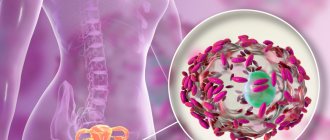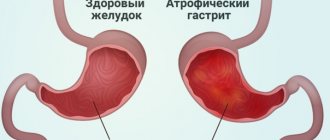Colpitis
or
vaginitis
is an inflammation of the vaginal mucosa caused by bacteria, fungi and viruses. The natural microflora of a healthy woman successfully fights microorganisms that enter her. In cases of malfunctions in the functioning of the immune system, the vital activity of pathogenic and conditionally pathogenic microflora is activated.
The main causes of the inflammatory process:
- Sexually transmitted infections (STIs) or (STDs)
- Mechanical damage to the vaginal mucosa as a result of childbirth or frequent sexual intercourse
- Endocrine diseases
- Frequent and long-term use of antibiotics
- Allergy
- Failure to comply with personal hygiene rules
Cost of treatment for colpitis?
| Name of service | Price, rub.) |
| Primary appointment with an obstetrician-gynecologist (candidate of medical sciences; doctor of medical sciences) | 2100 rub. |
| Repeated appointment with an obstetrician-gynecologist (candidate of medical sciences; doctor of medical sciences) | 1600 rub. |
| Primary appointment with an obstetrician-gynecologist | 2000 rub. |
| Repeated appointment with the obstetrician-gynecologist | 1500 rub. |
| Consultation with an obstetrician-gynecologist on pregnancy | 2500 rub. |
| Individual selection of drug treatment for diseases of the pelvic organs | from 1500 to 3000 rub. |
All our services and prices
ETIOLOGY AND EPIDEMIOLOGY
Aerobic (nonspecific) vaginitis is a polymicrobial disease in which the anaerobic species of lactobacilli, which normally prevail, are replaced by aerobic bacteria, mainly Streptococcus spp., Staphylococcus spp., Enterococcus spp., bacteria of the Enterobacteriaceae family (E. coli, Klebsiella spp. , Citrobacter spp., Enterobacter spp., Serratia spp., Proteus mirabilis, Morganella morganii), with the development of an inflammatory reaction.
The prevalence of AV in the female population is 5–10%; among pregnant women it reaches 8.3–12.8%. In women with symptoms of inflammatory diseases of the reproductive tract, AV is observed in 23–30% of cases. The most severe form of AV is desquamative inflammatory vaginitis.
AB is most often detected in girls before menarche and in women during the menopausal period, when, due to physiological reasons (low levels of estrogens that control the exchange of glycogen in the vaginal epithelium), the number of lactobacilli decreases. In reproductive age, the main causes of AV development, as a rule, are infectious diseases, endocrine pathology, decreased functional activity of the ovaries, and exposure to local damaging factors.
In old and senile age, the development of AV is largely due to a decrease in the activity of protective factors of the vaginal mucosa, namely a decrease in the formation of lactic acid from glycogen. Replacement of other members of the microbial community by opportunistic microorganisms with predominantly aerobic catabolism leads to the development of vaginitis with a pronounced leukocyte reaction and clinical signs of inflammation.
The exact causes and mechanism of development of AV have not yet been fully determined. However, it has been established that in the etiopathogenesis of the disease, the microbial factor plays the same important role as the state of the macroorganism and those circumstances that change its immunobiological properties.
Risk factors for the development of AV most often include: metabolic disorders; general infectious diseases; nutritional factor; chronic stressful situations; toxic effects of certain medications (antibacterial, cytostatic, glucocorticosteroid agents, antacids); various extragenital diseases, complicated pregnancy and childbirth.
AB refers to diseases that do not pose a direct threat to a woman’s health. However, with this dysbiosis of the vaginal biotope, the lower parts of the genital tract are massively colonized by opportunistic microorganisms, which are the main causative agents of purulent-inflammatory diseases of the pelvic organs. Bacteria such as Staphylococcus spp., Streptococcus spp., coliform bacteria (Escherichia coli) are considered by modern researchers as the most common causative agents of chorioamnionitis, intraamnial infection, postpartum endometritis, and postoperative inflammatory complications.
According to many researchers, AV is a more common cause of pregnancy complications than bacterial vaginosis. It is also associated with premature rupture of membranes, premature birth and low fetal weight. Another very significant complication of AV, as stated earlier, is the development of inflammatory diseases of the pelvic organs in women.
CLASSIFICATION
There is no generally accepted classification of AB. There are acute, subacute, chronic (recurrent) and subjectively asymptomatic forms of the disease. The severity of AV is established based on the clinical picture and criteria for microscopic diagnosis of aerobic vaginitis (Table 1).
CLINICAL PICTURE
Subjective symptoms:
- profuse yellowish or yellow-green discharge from the genital tract, sometimes with a putrid odor. The disease can last a long time with periodic improvements and exacerbations. In some cases, exacerbations of the disease are observed after menstruation;
- discomfort in the external genital area;
- pain during sexual intercourse (dyspareunia);
- Sometimes there is itching and a burning sensation in the genital area.
Objective sympathomas:
A feature of the course of AV is the presence of a pronounced inflammatory reaction of the vaginal mucosa. During a gynecological examination in the acute stage of the disease, pain during the insertion of speculum, swelling, hyperemia, petechial rashes, superficial erosions of the mucous membrane of the walls and vestibule of the vagina are noted. In chronic forms of AV, these signs are less pronounced.
DIAGNOSTICS
Diagnosis of AV is based on medical history, results of clinical examination and laboratory tests.
Laboratory research
1. Microscopic examination of vaginal discharge (400x magnification, phase-contrast microscope).
The microscopic picture of a Gram-stained smear is characterized by the following signs typical of an exudative inflammatory process:
- the vaginal epithelium is represented by superficial and intermediate cells; with a pronounced inflammatory process, parabasal cells are observed;
- leukocyte reaction expressed to varying degrees (>15–20 leukocytes per field of view);
- the total number of microorganisms is moderate or abundant;
- Lactobacillus spp. absent or their number is sharply reduced (to a few in the field of view);
- morphotypes of opportunistic microorganisms predominate - coliform bacilli or gram-positive cocci.
For a more accurate diagnosis of AB and assessment of lactobacilli deficiency, it is recommended to determine the lactobacillary grading (LBG), an indicator of the colonization of the vagina with lactobacilli,
which is detected by microscopy of a vaginal smear stained with Gram stain (Table 1).
Degrees I and II A are considered an indicator of vaginal normocenosis. To determine the presence and severity of AV, GG Donders (2002) proposed criteria similar to the R. Nugent system for diagnosing bacterial vaginosis (Table 2).
Points are assessed separately according to 5 criteria (lactobacillary degree, leukocyte count, proportion of toxic leukocytes, background microflora, proportion of parabasal epithelial cells) and are summed up.
- Sum of points up to 3 – no signs of AB;
- 3–4 points – mild degree of AB;
- 5–6 points – moderate AV;
- 6–10 points – severe AV, incl. 8–10 – aerobic desquamative inflammatory vaginitis.
2. Culture testing is traditionally used in clinical practice to identify pathogens, their quantitative assessment and determine the antibacterial sensitivity of isolated isolates. In case of AV, cultural examination reveals:
- lack of growth of lactobacilli or their minimal number;
- high quantitative indicators of aerobic opportunistic microorganisms in the form of monoinfection or polymicrobial associations.
In case of AV, Streptococcus, Staphylococcus spp., Enterococcus spp., bacteria of the Enterobacteriaceae family (E. coli, Klebsiella spp., Citrobacter spp., Enterobacter spp., Serratia spp., Proteus mirabilis, Morganella morganii) are most often isolated and identified.
To evaluate the results of microscopic and cultural examinations, a comprehensive system for identifying disorders of the vaginal microflora is used (“Integral assessment of the state of the vaginal microbiota. Diagnosis of opportunistic infections”, Ankirskaya A.S., Muravyova V.V., 2011).
3. Real-time polymerase chain reaction (PCR) is one of the most accurate molecular biological methods for studying microbiota, which makes it possible to objectively study the amount of opportunistic and normal vaginal microflora, the degree and nature of the imbalance, as well as monitor the effectiveness of treatment.
Consultations with other medical specialists (endocrinologist, gastroenterologist) are recommended in case of frequent recurrence of AV in order to exclude concomitant diseases (conditions) that may contribute to disruption of the normal vaginal microbiota.
DIFFERENTIAL DIAGNOSTICS
Differential diagnosis of AV must be carried out with other urogenital diseases caused by pathogenic (N. gonorrhoeae, T. vaginalis, C. trachomatis, M. genitalium) and opportunistic microorganisms (yeast-like fungi of the genus Candida, genital mycoplasmas, anaerobic microorganisms), anogenital herpes virus infection. The algorithm for differential diagnosis of AV and bacterial vaginosis is presented in Table. 3.
TREATMENT
Indications for treatment
The indication for treatment is the diagnosis of AV, established on the basis of a clinical examination and laboratory tests. Treatment of asymptomatic AV, identified by microscopic examination of vaginal discharge, must be carried out before the introduction of intrauterine devices; before surgical interventions on the pelvic organs, including medical abortions; pregnant women with a history of premature birth or late miscarriages.
If sexual partners have clinical signs of balanoposthitis, urethritis and other diseases of the urogenital system, it is advisable to examine them and, if necessary, treat them.
Treatment Goals
- clinical recovery;
- normalization of laboratory parameters;
- prevention of the development of complications associated with pregnancy, fetal pathology, the postpartum period, the postoperative period and the performance of invasive gynecological
- logical procedures.
General notes on therapy
The main direction in the treatment of AV should be the elimination of an increased number of aerobic microorganisms, which is achieved through the use of etiotropic drugs.
Local therapy. The drugs of choice for local treatment are non-absorbable broad-spectrum antibacterial drugs that act on intestinal gram+ and gram- aerobes: a combination drug of neomycin sulfate 35,000 IU, polymyxin B sulfate 35,000 IU, nystatin 100,000 IU (Polygynax) and clindamycin.
The combined drug: neomycin sulfate 35,000 IU, polymyxin B sulfate 35,000 IU, nystatin 100,000 IU has a wide spectrum of antimicrobial action against AV pathogens, has a pronounced anti-inflammatory effect and helps reduce symptoms of the disease from the first days of treatment. Unlike medications containing glucocorticosteroids, this drug does not have an immunosuppressive effect on local immunity and promotes rapid restoration of the number of lactobacilli and the functional activity of the vaginal epithelium. Intravaginal use of the drug Polygynax allows you to avoid systemic effects on the body, and also makes it possible to prescribe the drug to pregnant women (with the exception of the first trimester). These features of the drug help achieve an optimal therapeutic effect, which is especially important in the presence of mixed bacterial and fungal infection.
Clindamycin for local use is convenient to use both in outpatient and inpatient practice, provides satisfactory compliance and good tolerability in combination with pronounced therapeutic efficacy.
Povidone-iodine (Betadine) in the form of a solution (for douching) or vaginal suppositories promotes faster relief of symptoms due to its pronounced antiseptic effect, activity against antibiotic-resistant strains of bacteria and its own prebiotic effect: povidone-iodine increases the acidity of the vaginal environment, which leads to the rapid creation optimal conditions for restoring normal vaginal microflora.
Short-term use of topical glucocorticosteroid drugs in addition to antibacterial therapy is indicated only for desquamative inflammatory vaginitis.
Treatment of AV may include topical application of estriol or estradiol in cases where the clinical picture is dominated by atrophic changes (increased number of parabasal cells).
Systemic therapy. In severe cases of AV, treatment with systemic antibacterial drugs and local drugs is recommended.
Indications for the use of systemic antibacterial drugs:
- frequent relapses of AV with severe course;
- resistance and ineffectiveness of local treatment;
- the presence of concomitant infectious diseases.
Indications for hospitalization
None.
Recommended treatment regimens
Local therapy
combination drug: neomycin sulfate 35,000 IU, polymyxin B sulfate 35,000 IU, nystatin 100,000 IU, vaginal capsules intravaginally 1 time per day before bedtime for 12 days,
or
clindamycin, cream 2%, 5.0 g intravaginally 1 time per day, preferably before bedtime for 3–7 days, for desquamative inflammatory vaginitis up to 4–6 weeks,
or
povidone-iodine, intravaginal suppositories daily before bedtime, for 10–14 days,
or
dequalinium chloride 10 mg, vaginal tablets, intravaginally daily before bed, for 6 days.
Systemic antibacterial drugs
ofloxacin 200–400 mg 2 times a day for 7–10 days,
or
ciprofloxacin 125–500 mg 2 times a day, in more severe cases – up to 750 mg 2 times a day for 7–14 days,
or
levofloxacin 500 mg 1–2 times a day for 7–14 days,
or
amoxicillin 500 mg 3 times a day; in case of severe infection, the dose can be increased to 1.0 g 3 times a day for 7–10 days,
or
amoxicillin/clavulanate 500 mg+125 mg 3 times a day for 7–10 days.
Evaluation of treatment effectiveness
- clinical recovery;
- normalization of laboratory parameters.
It is recommended to establish cure 14 days after the end of treatment.
Tactics in the absence of treatment effect
Prescription of other drugs or treatment methods.
Treatment of colpitis
Symptoms of the disease may appear to varying degrees. During acute processes, they are pronounced and cause discomfort to the woman. Chronic inflammation may not cause any particular problems. In any case, it is necessary to visit a gynecologist and undergo an examination and a series of laboratory tests (gynecological smear, PCR, culture from the genitourinary tract if necessary) to make a diagnosis and medical prescriptions. Treatment of colpitis (vaginitis) involves complex therapy using antibacterial, antiviral and antifungal drugs, as well as means to restore the normal microflora of the vaginal mucosa and strengthen the immune system. During the course you should adhere to a diet, avoid sexual intercourse and alcohol. It is recommended that both partners undergo therapy to avoid relapses of colpitis.
Colpitis (vaginitis) - symptoms and treatment
The goals of treatment are to eliminate inflammation and restore vaginal microflora.
Treatment regimen for vaginitis
Treatment always consists of two stages. The first stage is the fight against inflammatory agents. This stage sometimes begins with a slight acidification of the vaginal environment (only if indicated). The second stage is the restoration of microflora in the vagina and intestines, followed by transition to preventive measures to reduce the risk of relapse.
Medicines
Treatment of specific and nonspecific vaginitis. Depending on the causative agent of the disease, systemic therapy with antibacterial drugs (amoxicillin, jazzomycin, clindamycin, ornidazole, metronidazole, tinidazole, etc.) may be required. Suppositories, capsules or vaginal tablets are prescribed locally, most often containing combination drugs (Poliginax, Macmiror complex, Terzhinan, Neo-penotran, etc.).
Treatment of candidal vaginitis (thrush). For thrush, antimycotic (antifungal) drugs of local and systemic action are prescribed.
Treatment of atrophic vaginitis. For atrophic vaginitis, the use of vaginal creams, tablets or rings with estrogen is indicated [13].
Lifestyle and aids
During treatment, sexual abstinence is recommended. After the main course of therapy, it is necessary to carry out a course of restoring the microflora in the vagina with preparations containing lactobacilli.
Physiotherapeutic procedures
In case of a chronic and often recurrent process, treatment should be comprehensive and include physiotherapeutic procedures (ultrasonic sanitation with the stage of restoration of vaginal biocinosis). It is important not only to eliminate inflammation, but also to restore damaged microflora, immune defense and remove the influence of the causative factor (sanitize foci of chronic infection, change personal hygiene products or contraception, compensate for diabetes with insulin).
It is also worth noting that there is an additional method of treating and restoring the vaginal microflora - this is low-frequency ultrasound sanitation with the Gineton-MM apparatus. Advantages of this treatment method:
- direct bactericidal effect of ultrasonic vibrations with a frequency of 22-44 kHz;
- effective hydrodynamic rehabilitation;
- increasing the concentration of the drug at the site of inflammation;
- vibration and hydromassage in sonified tissues, stimulation of microcirculation, improvement of trophism and tissue metabolism.
This method is used as an additional method to the main treatment [2][4][6][9][11].
Surgical operations
Surgery is not required to treat vaginitis.
Diet for vaginitis
Nutrition does not have a significant effect on the course of vaginitis. When taking antibiotics, alcohol should be avoided.
Restoring and improving quality of life
If you follow the doctor's prescriptions, a complete cure and restoration of quality of life is possible.
Treatment of vaginitis during pregnancy
During pregnancy, careful monitoring of the microflora is necessary. This is due to the likelihood of infection spreading to the fetus and membranes, the threat of miscarriage and premature birth, miscarriage and pregnancy loss. The drugs are prescribed by the doctor individually depending on the test results and the timing of pregnancy.
How to treat vaginitis without potent drugs
Vaginitis caused by a bacterial infection cannot be cured without the use of antibiotics.
Is douching used for vaginitis?
Douching is not required to treat vaginitis.
How is a partner treated for vaginitis?
For specific vaginitis, the woman’s sexual partner is treated with antibacterial agents. For nonspecific vaginitis, the partner is not treated.
Traditional methods of treating vaginitis
The use of traditional medicine often not only does not lead to a cure, but also aggravates the situation.
Disease prevention
The main condition for successful prevention of vaginitis is sex using barrier contraceptives or with a regular, reliable partner.
In addition, the following will help protect you from an unpleasant disease:
- regular observation by a gynecologist and examination of smears for flora;
- healthy eating;
- giving up bad habits and physical activity;
- regular intimate hygiene, especially during menstrual periods - but using special intimate hygiene products that have a suitable pH level;
- habit of wearing underwear made from natural materials;
- timely replacement of sanitary pads (including daily pads);
- taking antibiotics only as prescribed by a doctor;
- absence of aggressive sexual intercourse and alternation of anal and vaginal sex.
How to make a diagnosis
A gynecologist diagnoses the disease.
The examination will take place as follows:
- Collection of primary data. The doctor receives the necessary information during a conversation with the patient. You need to remember when and why the unpleasant sensations arose, and whether something similar happened before. It is important to be aware of any endocrine diseases you have, your general health, and any medications you were taking shortly before your symptoms began.
- Gynecological examination using special mirrors. This way he will reveal swelling, hyperemia (redness), and the condition of the vaginal walls.
- Taking a smear to determine the composition of the microflora. The sample is taken from the vagina, urethra and cervix. An antibiotic sensitivity test is also taken. To determine sexually transmitted infections, vaginal discharge is examined using the polymerase chain reaction method.
Before visiting a gynecologist, abstain from sex for a day. There is no need to use sanitary tampons or douche - this way you will preserve the composition of the microflora. Two days before the examination, stop using intimate lubricants, do not use vaginal suppositories, and do not take antibiotics - unless this contradicts your doctor's recommendations.






